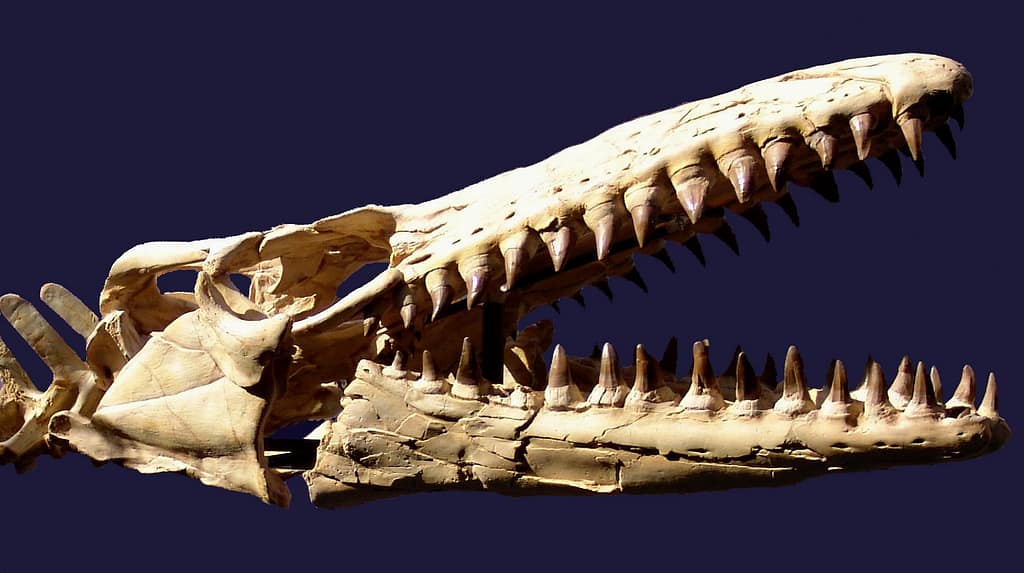
Introduction
The study of Mosasaurus beaugei, a mosasaur species, has greatly benefitted from recent discoveries of new material in the Maastrichtian phosphatic deposits of Morocco. These findings, including skull and mandibular remains, have significantly improved our understanding of this species, which was previously known mainly from isolated teeth. In this article, we provide a comprehensive overview of Mosasaurus beaugei, highlighting its characteristics, geographical and geological context, and paleontological implications.
Geographical and Geological Context
The phosphatic deposits of Morocco, part of the Mediterranean Tethyan phosphogenic province, have been an important resource for over a century. Extending from North Africa to the Middle-East, these deposits consist of four basins: Oulad Abdoun, Ganntour, Meskala, and Bu-Craa. Spanning from the Late Cretaceous (Maastrichtian) to the middle Eocene (Lutetian), the Moroccan phosphates have yielded a diverse array of marine vertebrate remains, including mosasaurs, sharks, bony fishes, and reptiles.
Characteristics of Mosasaurus beaugei
Mosasaurus beaugei shares several synapomorphies with the genus Mosasaurus, including large teeth with two prominent carinae and asymmetrical labial and lingual surfaces. The labial surface is flattened and strongly facetted, while the lingual surface is convex. Additional shared characteristics include a small pointed rostrum in the premaxilla and the absence of a rostrum in the dentary. The palatal elements are closely united, and the coronoid bone features a very large ventromedial process overlying the prearticular bone.
Distinctive Features of Mosasaurus beaugei
Mosasaurus beaugei exhibits several autapomorphies that set it apart from other species. These include having 12-13 teeth on the maxilla, marginal teeth bearing 3-5 prisms on the labial surface and 8-9 prisms on the lingual surface, a palatine bone with a concave posterior border perpendicular to the long axis of the skull, the splenial bone visible laterally on half of the ventral surface of the dentary bone, and a well-developed anterior wing on the coronoid bone with two notches.
Paleontological Implications
The discovery of Mosasaurus beaugei and other marine reptiles in the phosphatic deposits of Morocco has provided valuable insights into the evolution and diversity of these ancient creatures. Prior to these findings, our knowledge of these species was limited to fragmentary or isolated remains. Through active collaboration between the Office Chérifien des Phosphates (OCP), the Ministère de l’Énergie et des Mines, and the Centre National de la Recherche Scientifique (CNRS), paleontological fieldwork in Morocco has yielded a wealth of new information, expanding our understanding of marine reptiles during the Maastrichtian period.
Conclusion
The study of Mosasaurus beaugei has greatly advanced due to recent discoveries in the phosphatic deposits of Morocco. With improved knowledge of its characteristics, geographical and geological context, and paleontological implications, our understanding of this species and its role in the marine reptile assemblage has expanded. The ongoing collaboration and exploration in Morocco continue to shed light on the fascinating world of ancient marine reptiles, further enriching our understanding of Earth's history.



